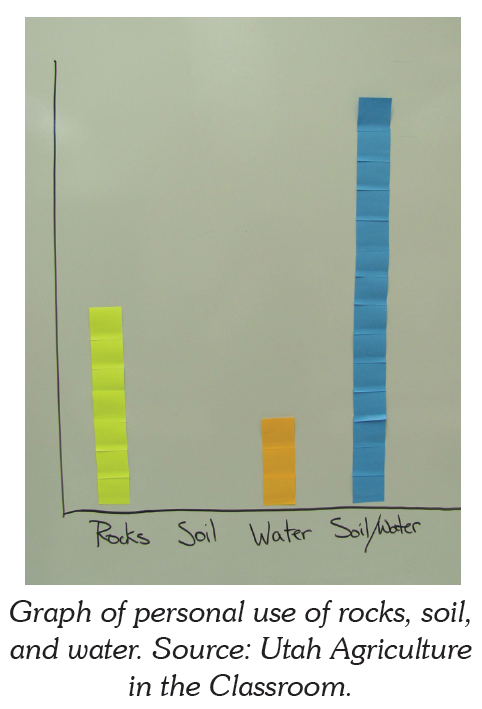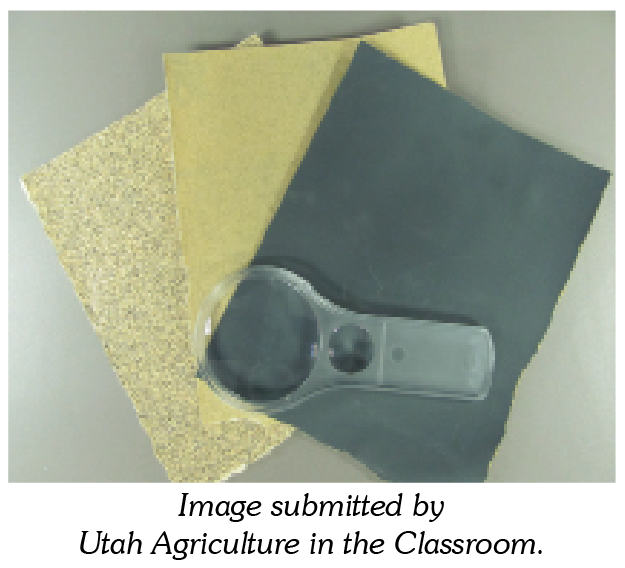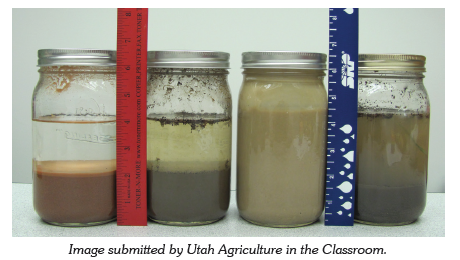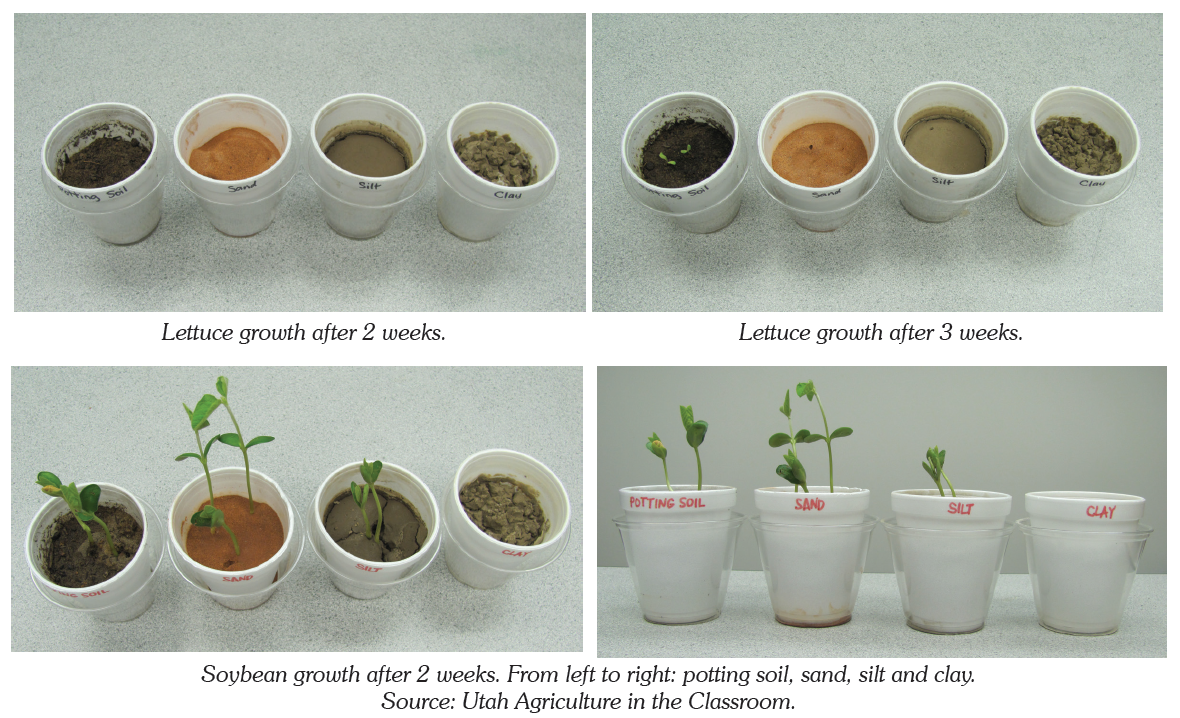Soil is the foundation for agriculture. We need soil to grow the plants we eat, the plants we wear (cotton and linen), the plants that provide us materials to build shelter, and the plants we use for thousands of different applications. Soil is composed of four elements: air, water, organic matter (decomposed material from once-living organisms), and non-living mineral particles (tiny pieces of weathered rock).
There are many different types of soil around the world. One simple and informative way to classify soils is by texture, which is determined by the size of the mineral soil particles. Soil particles come in three sizes: sand, the largest, followed in descending size by silt and clay. Clay is so small that the particles are actually impossible to see without magnification. Amazingly, you can feel the difference! A sandy soil feels gritty, and a clayey soil feels smooth and sticky. A soil with a mixture of all three particle sizes in about equal proportions is called a loam. This is the most desirable texture for growing crops because it holds just the right amount of water—not too much and not too little.
The texture of a soil determines how water will move through it. Water moves through clay very slowly because the spaces between the particles are very small, and the particles themselves actually attract water. Once wet, a clayey soil will take a long time to dry out. Nonetheless, it can be difficult for plant roots to access the water that is tightly held in clayey soil. In contrast, water moves very quickly through sandy soil. This means that the water is easy for plant roots to access, but the soil can dry out very quickly, leaving plant roots dry and thirsty if water isn’t applied frequently.
Air exists in the pore spaces between the soil particles. When a soil is dry there is more air in the soil, but when wet, there is very little air in the soil because the water has filled in the spaces! Soil is rarely completely dry; there is usually at least a small amount of moisture in soil. Some plants are aquatic and thrive in saturated soils, but many others do not. Most land-based plants need air in the soil to grow.
It is important for farmers to know the texture of their soils, so that they know what kinds of plants will grow well in them and how to irrigate. To determine the texture of a soil, farmers and soil scientists perform a type of “dirt shake” (hydrology test) in which soil particles are separated into water and then allowed to settle out over time. Because they settle at different rates, this allows for the measurement of the sand, silt, and clay content in a soil sample.
Hand texturing (using the hands to feel the soil) confirms the texture of a soil, and is used widely in the field when a hydrologic “dirt shake” test is not practical. Sand, whether dry or wet, is gritty. Silt, when dry, feels soft and powdery, when wet it feels smooth and slick. Clay is usually hard and clumped when dry, but if ground down it is also powdery like silt. When clay is wet it becomes very sticky and may stain your fingers, and this is the best way to tell silt and clay apart. Stepping into and then out of a wet clay soil can pull your shoe off! Clay mineral particles all have a great affinity for water. Some swell easily and may double in thickness when wet. Water molecules are strongly attracted to clay mineral surfaces. When a little clay is added to water, a slurry forms because the clay distributes itself evenly throughout the water. This property of clay is used by the paint industry to disperse pigment (color) evenly throughout a paint. Without clay to act as a carrier, it would be difficult to evenly mix the paint base and color pigment. A mixture of a lot of clay and a little water results in a mud that can be shaped and dried to form a relatively rigid solid. This property is exploited by potters and the ceramics industry to produce plates, cups, bowls, and so on.
Soil texture cannot be determined by the color of the soil. There is red sand in Utah and red clay in Oklahoma. The color of a soil is based on the amount of organic matter in the soil and the types of minerals in the rocks (parent material) from which the soil originated.
 Ask students to draw pictures or cut out pictures from magazines of things they have used or eaten in the last week. To accelerate the activity, you may provide images of items to the students.
Ask students to draw pictures or cut out pictures from magazines of things they have used or eaten in the last week. To accelerate the activity, you may provide images of items to the students. In preparation for this activity, fold each sandpaper sheet into four quarters, and then cut or tear the sections apart so that you get four pieces from each sheet.
In preparation for this activity, fold each sandpaper sheet into four quarters, and then cut or tear the sections apart so that you get four pieces from each sheet.

